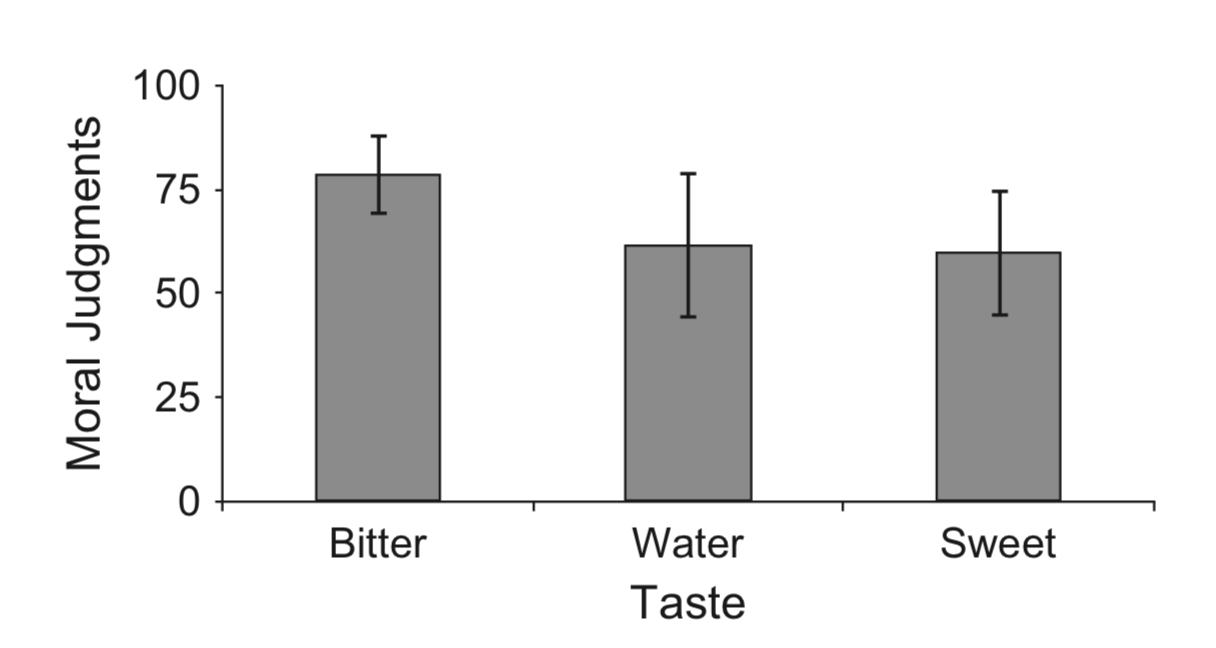Click here and press the right key for the next slide.
(This may not work on mobile or ipad. You can try using chrome or firefox, but even that may fail. Sorry.)
(If the slides don’t work, you can still use any direct links to recordings.)
also ...
Press the left key to go backwards (or swipe right)
Press n to toggle whether notes are shown (or add '?notes' to the url before the #)
Press m or double tap to slide thumbnails (menu)
Press ? at any time to show the keyboard shortcuts
Moral Intuitions and Heuristics: Evaluating the Evidence
replications / related research

Eskine et al, 2011 figure 1

Chapman & Anderson, 2013 table 2
‘To date, almost all of the studies that have manipulated disgust or cleanliness have reported effects on moral judgment. These findings strengthen the case for a causal relationship between disgust and moral judgment, by showing that experimentally evoked disgust---or cleanliness, its opposite---can influence moral cognition’
Chapman & Anderson (2013)
conclusion so far
There seems to be a variety of evidence for the claim
that manipulating disgust-related phenomena
can influence unreflective ethical judgements.
puzzle 1
Why do people tend to respond differently in Trolley and Transplant?
puzzle 2
Why are ethical judgements sometimes, but not always, a consequence of reasoning from known principles?